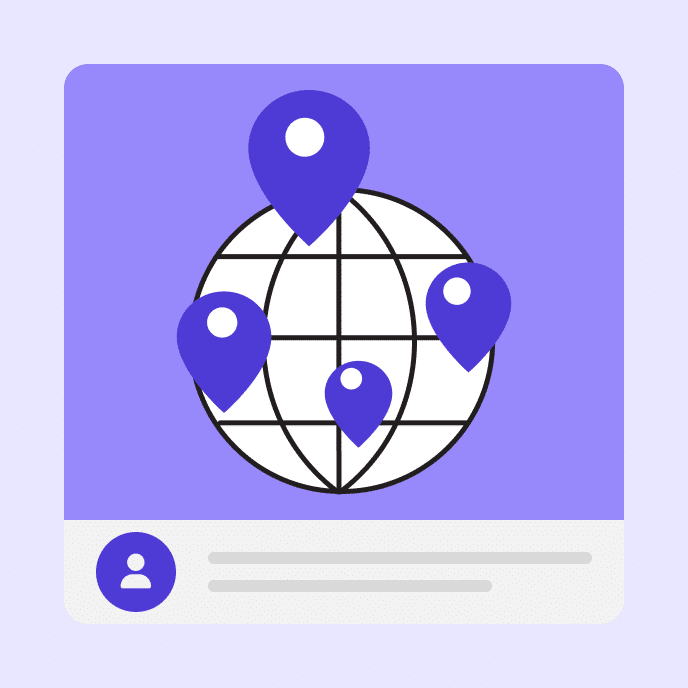6 E-Learning Localization Strategies for Workplace Training
Explore tips on localizing e-learning course content, multimedia, navigation, and more to deliver more impactful global workplace training.

The localization process: it’s more than just translation
E-learning localization is a critical step in an effective global learning and development strategy. It involves adapting online learning experiences for different languages, cultures, and geographic regions. Whether you’re delivering critical compliance training or safety information, onboarding new hires, or developing employees’ technical or soft skills—localization ensures that every employee can access and understand essential training materials.
That said, localization is a bit more complex than simply translating text into an employee’s native language. In this post, we’ll highlight six strategies to demystify and streamline the e-learning localization process.
Key Takeaways
1. Localize content for clarity and cultural relevance
Text is the backbone of most e-learning courses, so ensuring accuracy across languages is crucial. Keep the text concise when writing your source content, and avoid idioms, slang, or jargon that may not translate well into the target language. Creating a glossary of key terms can help maintain consistent definitions, especially when translating industry-specific language or acronyms.
Beyond accurate word-for-word translation, it’s important to adjust course content to reflect the preferences and expectations of your target audience, including relevant cultural references and regional nuances. This includes:
- Writing tone. Adapt the tone to suit the target audience’s cultural preferences. For example, some cultures use formal language in business settings, while others may find a conversational tone more engaging.
- Cultural norms, values, and customs. Decision-making styles, attitudes toward authority, or opinions on individualism versus collectivism can vary widely across cultures. Recognizing and accounting for these differences can help avoid misunderstandings and create a course that resonates with learners.
- Regional examples and references. Use examples that are familiar and meaningful to the audience in the target region, such as localized names, locations, or scenarios.

2. Check numbers and number formatting for regional accuracy
Numbers and their formatting can also vary by region. The chart below highlights some key considerations.
| Type | Explanation |
| Date | The order of day, month, and year can differ. For example, the U.S. uses the format MM/DD/YYYY, while many other countries use DD/MM/YYYY. Even separators can differ, such as the use of a dash vs. a slash. |
| Time | While some regions use a 12-hour clock with AM and PM, others use a 24-hour clock. Even terms like “AM” and “PM” can vary or be replaced with other conventions. |
| Currency | Localize not only the currency type but also the currency symbol (e.g., $, €, ¥), its placement (before or after the number), and formatting (e.g., commas vs. periods in large numbers). |
| Phone number | Different countries have distinct phone number structures, including variations in length, grouping, and country calling codes. |
| Unit of measurement | Convert units to the appropriate system, such as metric or imperial. Additionally, consider regional decimal and separator conventions. |
| Percentage | The placement of the percentage sign (%) can differ. Depending on the region, it may appear before the number, after it, or be separated by a space |
3. Adapt multimedia elements to engage international learners
Multimedia elements—such as images, videos, and narration—play a significant role in creating engaging e-learning experiences. However, they need careful review during localization to ensure they reflect cultural nuances and maintain relevance and accessibility.
- Images. Replace visuals with culturally appropriate alternatives where necessary. For example, avoid gestures or clothing styles that may not resonate globally.
- Videos. Ensure subtitles or captions are accurate and synced, and consider adding localized voiceovers where needed.
- Audio narration. Adjust the tone, pacing, and pronunciation to match the cultural preferences of your target audience.
4. Design navigation for global accessibility
Navigational elements—like text direction, menus, buttons, and progress trackers—must accommodate varying word lengths and reading patterns. For example, while many languages are read left-to-right—others, like Arabic and Hebrew, are read right-to-left. Additionally, text in some languages may expand or contract significantly when translated, resulting in visual disruption.
To ensure navigation is intuitive for all learners:
- Support left-to-right or right-to-left reading directions as needed.
- Use icons or universally recognized symbols where possible.
- Verify that designs remain functional, readable, and visually appealing, even after translation expands or contracts text.
- Ensure quizzes, clickable content, and other interactive e-learning elements function correctly and provide a seamless experience for your target audience after localization.
5. Conduct quality control with in-context human review
Even advanced translation tools can neglect cultural nuances or fail to capture cultural context, making human review an essential part of an effective localization strategy. After translating content, have native speakers conduct an in-context review. This involves examining the translated course alongside the original version.
This step ensures that training content is not only linguistically accurate but also culturally relevant and tailored to your target audience, effectively conveying your intended meaning.
6. Streamline localization with smart course file management
Localization often involves managing multiple versions of the same course, which can become chaotic without proper file organization. Establish a clear file management and publishing system.
A structured approach reduces errors, simplifies collaboration, and speeds up project timelines. Best practices might include:
- Using a consistent naming convention that includes the course title, language, and version number.
- Grouping assets like images, audio, and translated text into well-labeled folders.
- Choosing tools that integrate with your existing workflows or learning management system.
Localize online training courses for global workforces
Training linguistically, culturally, and geographically diverse employees starts with effective e-learning localization. Start by mapping out the key components of your e-learning course, including text, multimedia, interactions, and navigation. Localize these elements to reflect cultural and linguistic preferences, and validate their accuracy with in-context human review. Simplify your process by selecting tools that support streamlined file management and efficient workflows.
Follow these strategies to deliver more impactful, culturally relevant courses that engage international learners and advance your global learning and development goals. You can also learn more about the benefits of e-learning localization for employees and businesses here.
You may also like

Cut Through the Chaos: How to Update Your Call Center Team
Scrambling to communicate updates? Learn how to keep your call center team aligned, agile, and ready. No more chaos—just confident, consistent support.

